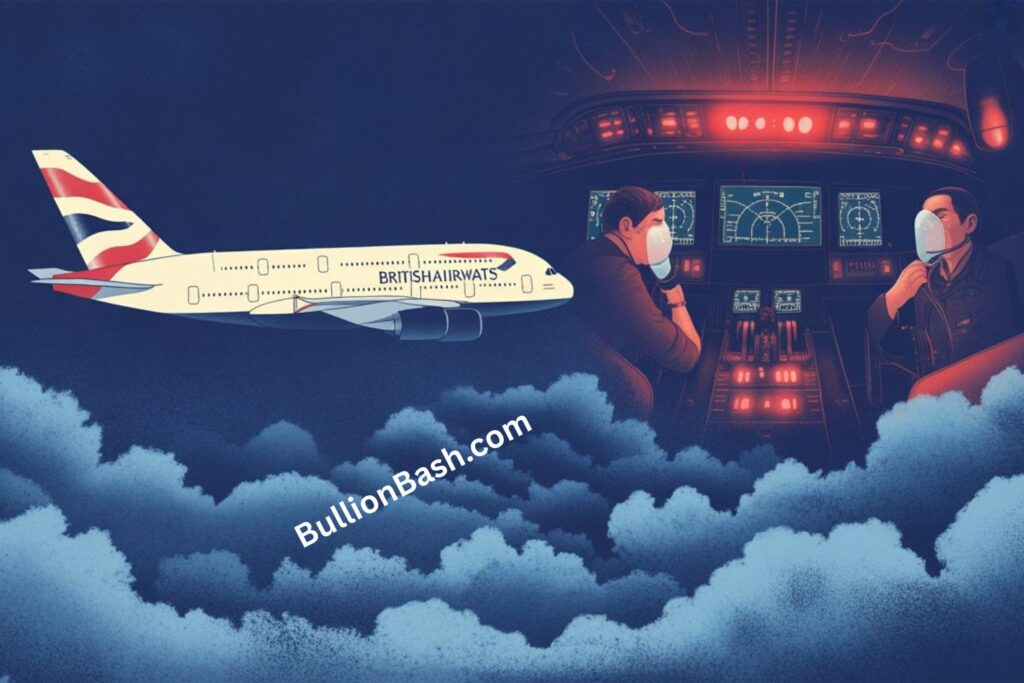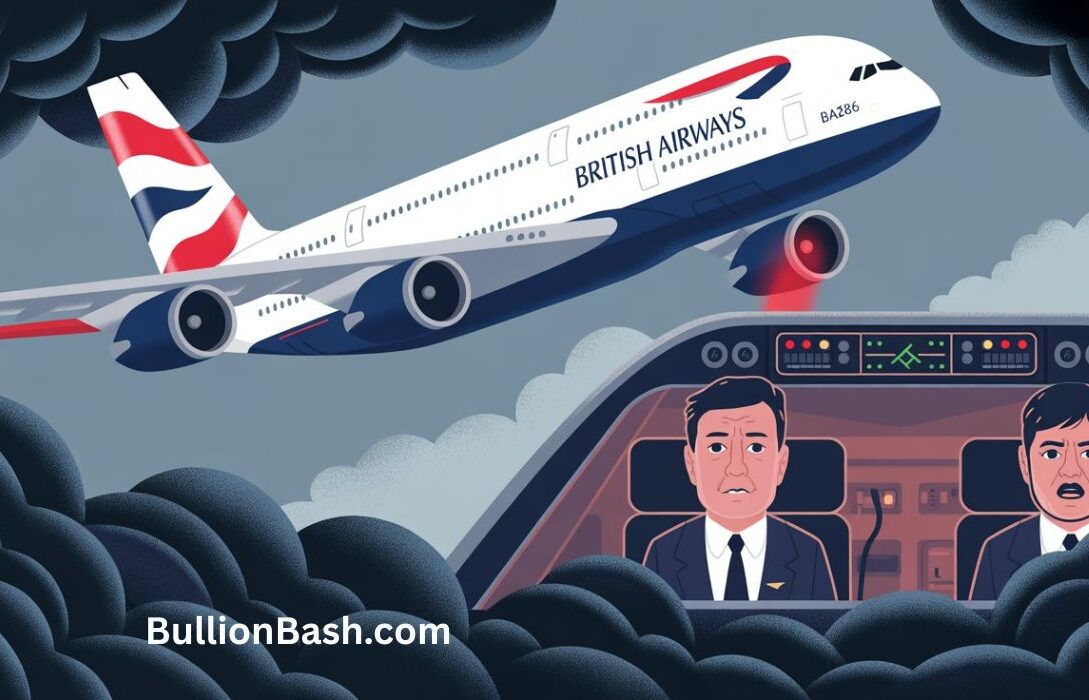Introduction
If you’re wondering what went down with the British Airways Emergency Flight BA286, here’s the quick version: a flight from San Francisco to London had to declare an emergency, using the code squawk 7700, before landing safely at Heathrow. No passengers were seriously harmed, the crew handled it, and the plane was secured on the ground. That’s the short story — but there’s more behind it that’s worth unpacking.
What Happened on BA286?
The flight in question was BA286, a scheduled Airbus A380 service that connects San Francisco International Airport (SFO) with London Heathrow (LHR). Normally, this route is long but uneventful. On this particular trip, however, things took a sharp turn mid-air.
Somewhere over the Atlantic, the aircraft’s transponder sent out a squawk 7700 signal. For those not familiar with aviation lingo, that’s basically the universal code pilots use to tell air traffic control, “We’ve got an emergency situation here.”
Now, emergencies can mean a bunch of things. It could be something mechanical, a medical emergency on board, or even unusual crew-related behavior. In this case, the details are still a bit mixed. Some reports point to a medical issue, while others talk about crew misconduct that stirred up a bit of chaos.
When and Where Did the Emergency Happen?
From flight tracker data like FlightAware and ADS-B logs, you can see that BA286 was cruising normally before the transponder alert was sent out.
- Departure: San Francisco International Airport
- Aircraft: Airbus A380 (registration G-XLEG)
- Approx. flight time: 10 hours
- Incident: Declared emergency mid-route over the Atlantic
- Landing: Safely touched down at Heathrow Terminal 5
The important part? The plane did not divert to another airport. It continued its route and landed at London Heathrow under emergency priority.
Why Was the Emergency Declared?

Possible Causes
Here’s where it gets interesting. The aviation world and online forums started buzzing with two possible reasons:
- Medical emergency – not uncommon on long-haul flights. A passenger falling seriously ill can trigger a squawk 7700 so medical help is ready on landing.
- Crew behavior – several niche media outlets and blogs reported an incident involving a British Airways crew member who allegedly caused disruption.
At the time of writing, there’s still no crystal-clear, official answer that everyone agrees on. But we do know this: the airline treated it as serious enough to declare an emergency code.
British Airways’ Response
Airlines are usually pretty cautious with their public statements. British Airways confirmed that the flight landed safely and that passengers were not in danger. However, they didn’t dive deep into specifics about the crew-related claims. That’s typical — airlines prefer investigations to finish before releasing details.
Did BA286 Divert or Land at Heathrow?
Unlike some emergencies where planes make unscheduled landings, BA286 did not divert. It stayed on course and landed at Heathrow as planned.
- Arrival terminal: Heathrow Terminal 5
- Emergency services: Were on standby, just in case
- Passengers: Disembarked safely
That alone should reassure travelers — not every emergency squawk ends in chaos.
What Does “Squawk 7700” Mean Anyway?
If you’re new to the aviation world, the word squawk might sound odd. Here’s the quick breakdown:
- Aircraft have transponders that communicate with air traffic control.
- When a pilot dials in 7700, it automatically flags the flight as a general emergency.
- This signal is picked up worldwide by radar systems and tracking websites.
So when BA286 broadcasted 7700, ATC knew instantly to clear its path, give it landing priority, and have emergency services ready.
Passenger Experience During the Incident
Eyewitness Accounts
Several passengers and aviation enthusiasts shared their observations online. Most accounts suggest the atmosphere was tense but not chaotic. Flight attendants continued to serve and reassure passengers, which is standard procedure during in-flight emergencies.
Crew Behavior Claims
This is the part that made headlines: some media outlets reported that a crew member was involved in inappropriate behavior, possibly linked to substance use. While those reports caught fire online, they remain unconfirmed. British Airways hasn’t officially validated those claims, so it’s important to take them with a grain of salt.
What Happens After a Flight Declares an Emergency?
Investigation Process
In the UK, incidents like this fall under the watch of the Civil Aviation Authority (CAA) and, depending on the severity, the Air Accidents Investigation Branch (AAIB). They look into:
- Flight crew reports
- Passenger statements
- Aircraft data logs
- Ground communication records
This process can take weeks or even months, so don’t expect instant answers.
British Airways’ Safety Record
It’s worth noting that British Airways has a strong safety record. Emergencies do happen — and declaring one doesn’t mean disaster, it often means the crew is just being cautious.
How Do Emergencies Affect Passengers?
Passenger Rights
If a flight is delayed, cancelled, or severely disrupted due to an emergency, travelers under EU/UK261 regulations may be entitled to:
- Compensation (depending on circumstances)
- Meals and accommodation during delays
- Rebooking or refunds
In this case, because BA286 landed on schedule, large-scale compensation probably won’t apply.
Safety Reassurance
Long-haul flights see medical or technical issues more often than you’d think, but aviation protocols are designed to handle them. The Airbus A380 itself is built with multiple redundancies, making it one of the safest jets in the sky.
Media Reactions and Online Buzz
Whenever a plane declares squawk 7700, aviation blogs, Twitter/X accounts, and tracking websites light up. This was no exception.
- Flight tracking maps showed the emergency code in real-time.
- Aviation news sites like AirLive and SimpleFlying covered the story.
- Social media amplified the more dramatic crew behavior claims, which spread faster than the confirmed facts.
It’s a reminder of how aviation incidents live two lives: the technical reality and the viral version.
Lessons Travelers Can Take from BA286
This incident, while unsettling, highlights some useful points:
- Emergencies aren’t always disasters – squawk 7700 often means precaution.
- Crew training works – BA staff are drilled for these situations.
- Stay calm as a passenger – panic doesn’t help, and usually, the plane lands safely.
- Don’t believe every rumor – wait for official reports before jumping to conclusions.
Conclusion
The story of the British Airways Emergency Flight BA286 shows how a routine long-haul journey can suddenly become headline news. Even though the words “emergency flight” sound alarming, the reality here is that the aircraft landed safely, no passengers were lost, and the airline handled things by the book.
Aviation emergencies might look scary on flight trackers or in social media feeds, but in practice, they’re often controlled, professional, and resolved without major harm. BA286 is a reminder that air travel, even with its rare hiccups, remains one of the safest ways to cross the globe.
See Also: Deme Reacts to New Evils Song but It Gets Controversial
FAQs
Was BA286 diverted?
No. The flight continued its route and landed safely at Heathrow Terminal 5.
Was anyone injured on BA286?
Reports suggest no serious injuries.
What does squawk 7700 mean?
It’s the universal transponder code for a general in-flight emergency.
Was the crew involved in misconduct?
Some reports suggest unusual behavior by a crew member, but British Airways hasn’t officially confirmed it.Is flying with British Airways safe after BA286?
Yes. British Airways has a strong safety record, and this incident was managed professionally.


